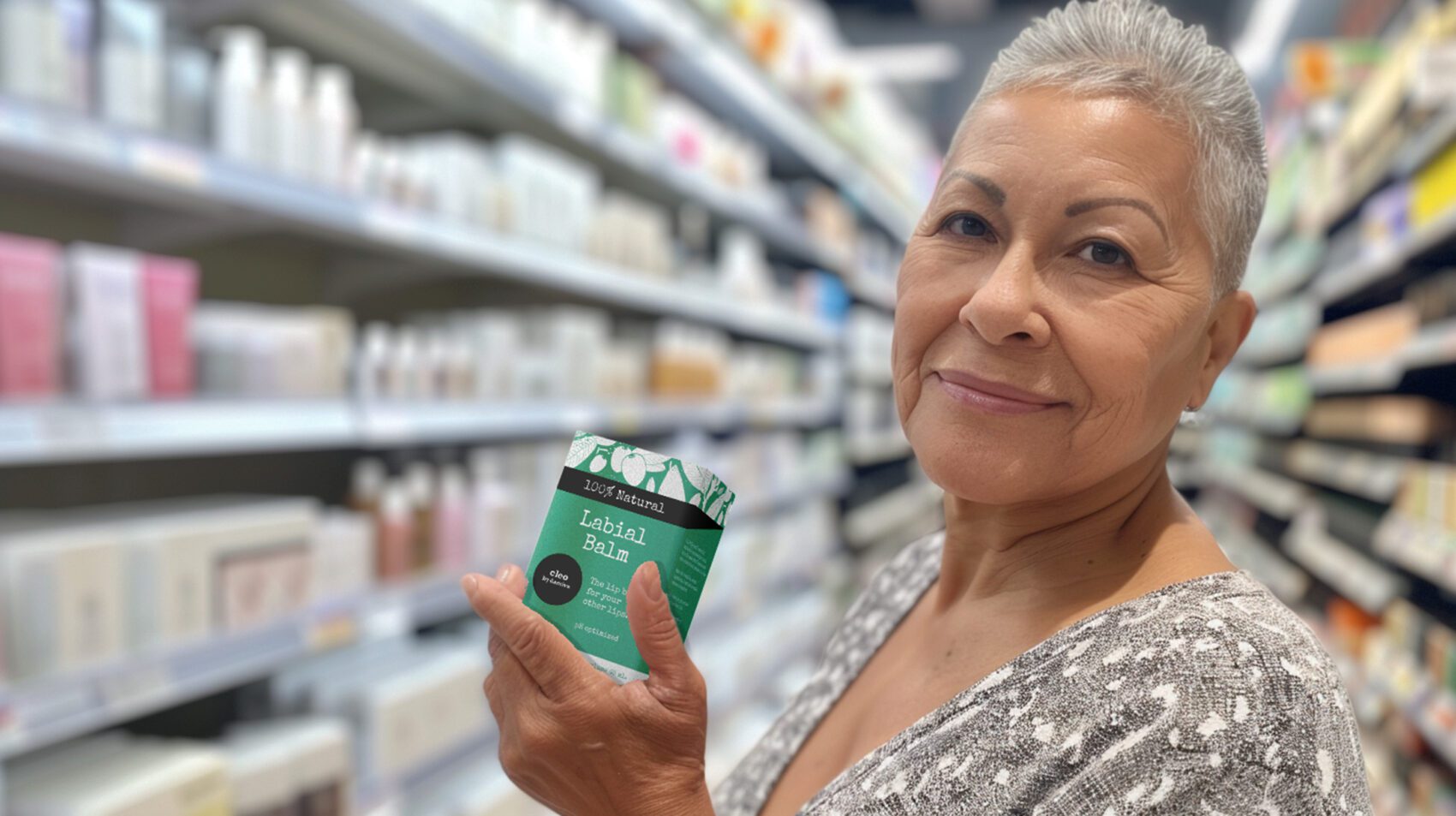Introduction to Feminine Hygiene and pH Balance
Understanding the Importance of Feminine Hygiene
Feminine hygiene is a critical aspect of a woman’s overall health and well-being. It involves practices that ensure the cleanliness and proper care of the vaginal and vulvar areas. Good feminine hygiene helps prevent infections, discomfort, and odors, and is especially important during menstruation, sexual activity, and exercise. It encompasses everything from the choice of products used to the methods of cleansing and maintaining the health of the intimate area.
The Role of pH Balance in Feminine Health
The concept of pH balance is central to feminine health. The pH level, which measures how acidic or alkaline a substance is, plays a crucial role in the vaginal environment. A healthy vaginal pH is slightly acidic, typically between 3.8 and 4.5, which helps to maintain the balance of the microbiome and prevent the overgrowth of harmful bacteria. Disruptions to this delicate pH balance can lead to conditions such as bacterial vaginosis or yeast infections, which can cause symptoms like itching, burning, and abnormal discharge.
Common Issues Faced During Perimenopause and Menopause
As women approach perimenopause and menopause, they often experience changes in their feminine health due to fluctuating hormone levels. These changes can include vaginal dryness, irritation, and an increased risk of infections. The decline in estrogen levels during this stage can affect the vaginal pH, making it more alkaline and less able to ward off harmful bacteria. Understanding and addressing these changes is essential for maintaining feminine hygiene and comfort during these transitional years.
The Connection Between Estrogen Decline and pH Imbalance
Estrogen plays a significant role in maintaining the health of the vaginal lining and its natural acidity. As women age and estrogen levels decline, particularly during perimenopause and menopause, the vaginal pH tends to rise. This increase in pH can disrupt the balance of the vaginal microbiome, leading to a reduction in beneficial lactobacilli and an increase in pH-sensitive pathogens. This imbalance can result in infections, discomfort, and a host of other feminine health concerns. Therefore, it is crucial to adopt hygiene practices that support pH balance and address the hormonal changes that affect feminine health.
Natural pH Balance: What It Is and Why It Matters
Defining Optimal pH Levels for Feminine Health
The concept of pH balance is crucial in maintaining feminine health. The pH scale, which ranges from 0 to 14, measures how acidic or alkaline a substance is. A pH below 7 is acidic, 7 is neutral, and above 7 is alkaline. For the vagina, an optimal pH level is moderately acidic, typically between 3.8 and 4.5. This acidity helps to form a protective barrier against harmful bacteria and yeast. However, these levels can fluctuate with age, hormonal changes, and during different phases of the menstrual cycle.
How pH Affects the Vaginal Microbiome
An acidic vaginal environment is essential for a healthy vaginal microbiome, which is the community of microorganisms living in the vagina. This acidity supports the growth of beneficial bacteria, mainly Lactobacilli, which play a key role in preventing infections by producing lactic acid and other substances that inhibit harmful bacteria and yeast. Disruptions to this delicate balance can lead to an overgrowth of pathogenic organisms, resulting in conditions like bacterial vaginosis (BV) and yeast infections.
Symptoms and Risks of pH Imbalance
When the vaginal pH is disrupted, it can lead to noticeable symptoms. These may include an unusual vaginal odor, often described as fishy, changes in discharge such as increased volume or altered color and texture, and discomfort such as itching or burning. An imbalanced pH can also affect fertility, as sperm thrive in a more alkaline environment. Recognizing these symptoms early is key to addressing pH imbalance and maintaining vaginal health.
The Impact of Lifestyle and Aging on pH Levels
Lifestyle factors and aging can significantly impact vaginal pH levels. Menstrual blood, which is slightly alkaline, can temporarily increase vaginal pH. Antibiotics, sexual activity, and certain hygiene practices can also alter pH levels. As women approach perimenopause and menopause, estrogen levels decline, which can lead to a higher pH and increased susceptibility to infections. To manage pH balance, it’s important to adopt healthy practices such as wearing breathable fabrics, maintaining proper hydration, and choosing appropriate hygiene products.
Understanding and maintaining a natural pH balance is not only a matter of comfort but also a critical aspect of a woman’s overall health. By being mindful of the factors that can affect vaginal pH and recognizing the signs of imbalance, women can take proactive steps to preserve this delicate ecosystem and prevent potential health issues.

Do you have the most commonly used but toxic, disease bringing chemicals in your skin care? Many chemicals in skincare are hormone disruptors and make menopause symptoms worse.
Find out more…
Daily Feminine Hygiene Practices for pH Balance
Cleansing: Dos and Don’ts
Maintaining a healthy pH balance starts with proper cleansing techniques. The vulva, the external part of the genitalia, should be washed daily with warm water only. If soap is used, it should be mild and fragrance-free. It’s important to use your hands rather than a washcloth, which can harbor bacteria and cause irritation. The vagina itself is self-cleaning, so internal washing or douching is unnecessary and can disrupt the natural pH balance, leading to irritation or infection. After using the toilet, always wipe from front to back to prevent bacteria from the anus from contaminating the urethra or vagina.
Choosing the Right Hygiene Products
When selecting hygiene products, look for those that are free from chemicals, fragrances, beeswax, and dyes. Products marketed as “feminine hygiene” can often be misleading and may actually harm the delicate balance of the vaginal environment. Opt for pH-balanced washes specifically designed for the vulvar area if you choose to use soap. Additionally, be cautious with lubricants and condoms, which should be free from glycerin, petroleum, parabens, and other irritants that can affect pH levels.
The Importance of Breathable Fabrics
What you wear can also impact your vaginal health. Choose underwear made from natural, breathable fabrics like cotton, which allows for air circulation and reduces moisture buildup. Moist environments can promote bacterial growth and lead to infections. Avoid tight-fitting clothing and thongs, which can contribute to irritation and transfer bacteria. At night, consider going without underwear to allow the area to breathe freely.
Hydration and Diet’s Role in Maintaining pH Balance
Your diet and hydration levels play a significant role in maintaining a healthy pH balance. Staying well-hydrated helps flush out toxins and supports overall vaginal health. A diet rich in probiotics, such as yogurt, kefir, kimchi, and sauerkraut, can promote the growth of beneficial lactobacilli bacteria, which are crucial for a balanced vaginal environment. Avoid sugar and processed foods, which can disrupt the microbiome. Incorporating foods rich in antioxidants, like garlic, can also support vaginal health. Remember, a balanced diet benefits your entire body, including your vaginal pH levels.
Addressing Feminine Health Concerns Naturally
Natural Remedies for Common Menopausal Symptoms
Menopause can bring a host of symptoms such as hot flashes, night sweats, and vaginal dryness. Natural remedies like phytoestrogens found in soy products, flaxseeds, and certain herbs may provide relief. Additionally, maintaining a balanced diet rich in vitamins and minerals supports overall health during this transition. Regular exercise and adequate sleep are also crucial in managing menopausal symptoms naturally.
Herbs and Supplements for Hormonal Support
Herbs such as black cohosh, red clover, and dong quai have been traditionally used to support hormonal balance. Supplements like vitamin E and omega-3 fatty acids can also help alleviate menopausal discomfort. It’s important to consult with a healthcare provider before starting any new supplement regimen, especially if you have existing health conditions or are taking other medications.
Pelvic Floor Exercises and Their Benefits
Strengthening the pelvic floor muscles through exercises like Kegels can provide numerous benefits, including improved bladder control, reduced risk of pelvic organ prolapse, and enhanced sexual function. These exercises are simple to perform and can be done discreetly at any time, making them an accessible tool for maintaining feminine health.
Stress Management Techniques for Overall Well-being
Stress can have a profound impact on feminine health, exacerbating symptoms of hormonal imbalance and affecting vaginal pH. Techniques such as mindfulness meditation, deep breathing exercises, and yoga can help manage stress levels. Engaging in regular physical activity and pursuing hobbies or activities that bring joy can also contribute to reducing stress and promoting a sense of well-being.

Popular Read
Understanding and Preventing Infections
Recognizing Signs of UTIs and Yeast Infections
Urinary Tract Infections (UTIs) and yeast infections are common concerns in feminine health. UTIs are typically characterized by a frequent urge to urinate, a burning sensation when urinating, cloudy or strong-smelling urine, and pelvic pain. Yeast infections, on the other hand, often present with itching, burning, and a thick, white discharge that resembles cottage cheese. Recognizing these symptoms early is crucial for prompt treatment and preventing complications.
Preventative Measures Against Infections
- Cleansing: Gently wash the vulva with warm water, avoiding harsh soaps and douches that can disrupt the natural pH balance.
- Underwear: Opt for breathable fabrics like cotton to reduce moisture buildup, which can create a breeding ground for bacteria.
- Wiping: Always wipe from front to back after using the toilet to prevent the spread of bacteria from the anus to the vagina and urethra.
- Sexual Activity: Use barrier methods such as condoms to reduce the risk of UTIs and maintain the natural bacterial balance.
The Role of Probiotics in Preventing Imbalances
Probiotics, particularly those containing Lactobacillus strains, can play a significant role in maintaining a healthy vaginal microbiome. These beneficial bacteria help keep the pH level acidic, preventing the overgrowth of harmful bacteria and yeast. Incorporating probiotic-rich foods like yogurt and kefir into your diet, or taking probiotic supplements, can support vaginal health and reduce the risk of infections. Also, incorporating a chemical-free vaginal moisturizer containing sucrose (which feeds Lactobacillus), can be helpful.
When to Seek Medical Advice
While many UTIs and yeast infections can be treated with over-the-counter remedies, it’s important to seek medical advice if symptoms persist or worsen. Medical intervention is necessary if you experience severe discomfort, fever, back pain (indicating a possible kidney infection), or if you’re pregnant. A healthcare provider can offer accurate diagnosis and appropriate treatment, which may include prescription medications or further investigation for underlying conditions.

⭐️⭐️⭐️⭐️⭐️
“I needed a product like this for medical reasons. Thanks to this product I was able to do my physical therapy. The formula is very comfortable. It provides the right amount of lubrication. I will continue to use. I’m very happy to have found this because nothing else was working.”
Beatriz E, Cleo Customer
Navigating the Market: Choosing Safe Products
Deciphering Product Labels and Ingredients
When it comes to feminine hygiene products, understanding the labels and ingredients is crucial for maintaining optimal pH balance and overall vaginal health. Look for products that list their ingredients transparently and avoid those containing harsh chemicals, fragrances, and dyes, which can disrupt the delicate balance of the vaginal microbiome. Opt for items with natural, hypoallergenic components that are gentle and pH-balanced to match the natural acidity of the vagina. Additionally, be wary of vague terms like “natural” or “for sensitive skin,” as these are not regulated and may still contain irritants.
The Importance of Transparency in Product Manufacturing
Transparency in manufacturing processes is a key indicator of a brand’s commitment to safety and quality. Brands that provide detailed information about their sourcing, production, and testing methods are more likely to produce reliable and safe feminine hygiene products. Look for companies that adhere to strict manufacturing standards and third-party certifications, which can provide an additional layer of assurance regarding product safety.
Evaluating Product Reviews and Recommendations
Product reviews and recommendations can be a valuable resource when choosing feminine hygiene products. However, it’s important to approach them with a critical eye. Consider the source of the review and whether it might be biased. Look for patterns in customer feedback, as recurring comments about irritation or ineffectiveness can be red flags. Peer recommendations can also be insightful, but remember that individual experiences can vary widely due to differences in body chemistry and personal preferences.
Ethical Considerations and Brand Trustworthiness
Choosing products from ethical brands that prioritize not only consumer health but also environmental sustainability and social responsibility can contribute to a positive impact beyond personal hygiene. Research brands to ensure they align with your values, whether that’s through cruelty-free practices, eco-friendly packaging, or initiatives that support women’s health globally. Trustworthy brands often engage in community education and are transparent about their ethical standards and business practices.

Feeling You Have a Right to Safe Beauty & Fem Care?
If so, it may be time for a change. It starts with knowledge. We have a few suggestions in our new guides.
Conclusion: Empowering Women Through Education and Choice
Summarizing Key Takeaways for Optimal Feminine Hygiene
Throughout this article, we have explored the critical aspects of feminine hygiene and the importance of maintaining an optimal pH balance. Key takeaways include understanding that the vaginal microbiome thrives at a specific pH level and that disruptions can lead to health issues. We’ve discussed the dos and don’ts of cleansing, the significance of selecting appropriate hygiene products, and the role of diet and lifestyle in maintaining pH balance. It’s essential to recognize that breathable fabrics and natural remedies can support feminine health, especially during hormonal changes such as perimenopause and menopause.
The Role of Informed Decisions in Women’s Health
Informed decisions are the cornerstone of women’s health. Knowledge about one’s body and the impact of various products and practices empowers women to make choices that best suit their individual needs. Understanding the ingredients in feminine hygiene products, their effects on the body, and when to seek medical advice allows women to take control of their health and well-being.
Encouraging Ongoing Research and Community Support
Ongoing research is vital to debunk myths and provide evidence-based recommendations for feminine hygiene. Community support plays a significant role in spreading awareness and education. By fostering an environment where women can share experiences and knowledge, we can collectively work towards better health outcomes and empowerment.
Final Thoughts on Achieving and Maintaining pH Balance
Achieving and maintaining vaginal pH balance is not just about health; it’s about a woman’s quality of life. It’s about dispelling fears and misconceptions perpetuated by society and the feminine hygiene industry. Women deserve access to accurate information and safe products that support, rather than disrupt, their natural bodily functions. As we continue to educate and empower women to make informed choices, we pave the way for a future where feminine hygiene is rooted in science, self-care, and respect for the female body.









